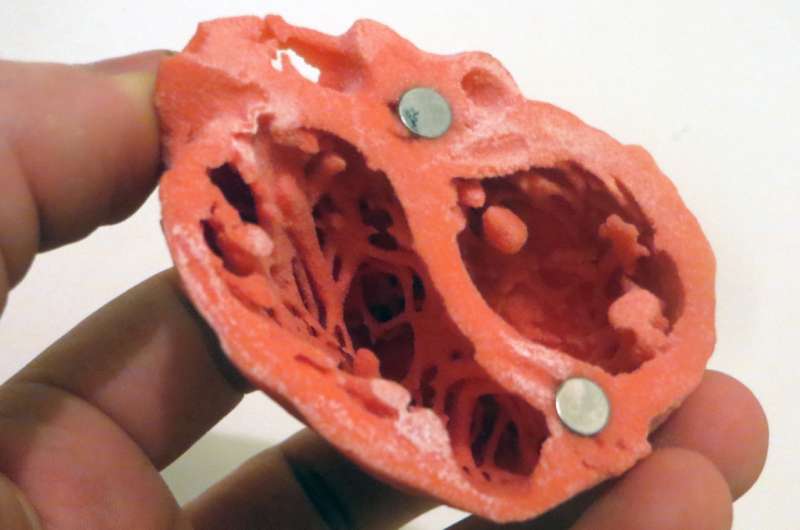A new model for heart valve disease drug discovery

An article published in Experimental Biology and Medicine describes a new model for heart valve physiology. The study, led by Dr. Carla Lacerda, from the Department of Chemical Engineering at Texas Tech University reports that 10% cyclic radial strain on isolated mitral valve anterior leaflets provides a true physiological environment that can be used for mechanistic studies and drug discovery.
Heart valves are responsible for maintaining a smooth flow of blood in one direction. Over 5 million Americans are estimated to live with a malfunctioning heart valve. Mechanical stresses (tensile and shear forces) are a major cause of valve degeneration. Valvular endothelial cells, one of the two types of cells comprising heart valves, can protect valves from degeneration. Understanding the molecular mechanisms used by these cells to respond to stress will provide new drug targets for treating valvular disease.
In the current study, Dr. Lacerda and colleagues used proteomic analysis to evaluate the effect of 10% cyclic radial strain on isolated heart valves. Stretch downregulated cytoskeletal proteins and proteins involved in energy metabolism, suggesting a quiescent state. Removal of the endothelium resulted in downregulation of extracellular matrix and cell-matrix adhesion proteins, suggesting a protective role of the endothelium in extracellular matrix homeostasis. Endothelium removal also upregulated protein synthesis activities.
Collectively, these studies provide new insights regarding the molecular mechanisms that regulate heart valve response to mechanical stress. These studies also define a true physiological environment that can be used to study valve function as well as discover new drugs for preventing, slowing or reversing valve disease.
Dr. Lacerda said that "Development of in vitro models to properly guide design of replacement tissues is key for the advancement of tissue engineering techniques. Only by developing physiology-mimicking constructs, in which cells behave as they do in vivo, will we be able to understand the molecular mechanisms employed by cells to defend themselves from environmental insults."
Dr. Steven R. Goodman, Editor-in-Chief of Experimental Biology & Medicine, commented "Lacerda and colleagues provide a proteomic and interactomic analysis of proteins and protein networks affected by mitral valve mechanical stretch and/or endothelium removal. This will be a useful platform for future studies on heart valve pathophysiology."
More information: Mir S Ali et al. The effect of physiological stretch and the valvular endothelium on mitral valve proteomes, Experimental Biology and Medicine (2019). DOI: 10.1177/1535370219829006



















